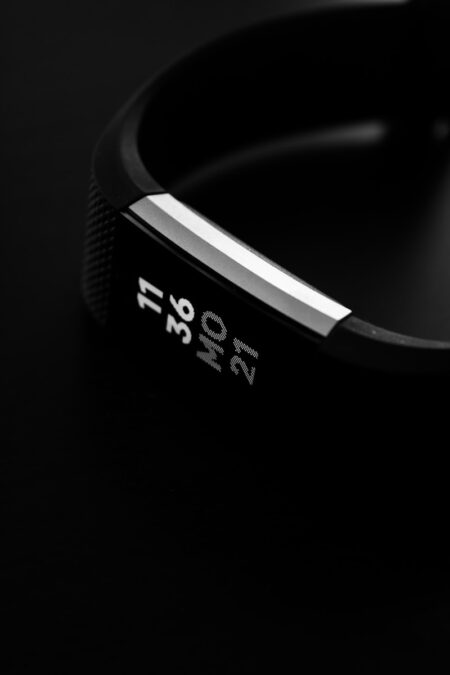Unlocking the Potential of Wearable Devices for Personal Fitness Goals
Introduction: The Rise of Wearable Fitness Technology
In an era where health and wellness are paramount, wearable fitness technology has emerged as a powerful tool for individuals seeking to monitor and optimize their physical activity levels. These innovative devices, such as the Nike Fuel Band endorsed by American athlete Andrew Luck, offer users real-time insights into their daily movements, encouraging a more active and healthier lifestyle.
Enhancing Exercise Accountability and Motivation
One of the key benefits of wearable fitness technology is its ability to enhance exercise accountability and motivation. By tracking metrics such as steps taken, distance traveled, and calories burned, these devices provide users with tangible feedback on their progress towards fitness goals. This data-driven approach not only fosters a greater sense of accountability but also serves as a source of motivation, inspiring individuals to stay active and consistent in their exercise routines.
Integrating Technology into Daily Life
Another advantage of wearable fitness technology is its seamless integration into daily life. Unlike traditional fitness tracking methods that may require manual input or dedicated monitoring, wearable devices offer a convenient and unobtrusive way to monitor physical activity throughout the day. Whether worn as a wristband, clip-on device, or integrated into clothing, these technologies enable users to effortlessly incorporate fitness tracking into their daily routines, fostering a more holistic approach to health and wellness.
The Future of Personalized Fitness Solutions
As wearable fitness technology continues to evolve, the future holds exciting possibilities for personalized fitness solutions. Advances in sensors, artificial intelligence, and data analytics are enabling the development of increasingly sophisticated devices that can provide personalized recommendations and insights tailored to individual users. From optimizing workout routines to identifying potential health risks, these next-generation wearables have the potential to revolutionize how we approach fitness and well-being.
Empowering Individuals to Take Control of Their Health
Ultimately, the impact of wearable fitness technology extends beyond mere exercise tracking—it empowers individuals to take control of their health and well-being. By providing actionable insights and encouraging positive behavior change, these devices serve as invaluable tools for promoting physical activity, preventing chronic disease, and enhancing overall quality of life. As we embrace the potential of wearable technology, we move closer to a future where everyone has the opportunity to lead healthier, happier lives.
Optimizing Performance Through Data Analysis
One of the most compelling features of wearable fitness technology is its ability to leverage data analysis to optimize performance. By collecting and analyzing data on metrics such as heart rate, sleep patterns, and exercise intensity, these devices provide users with valuable insights into their overall health and fitness levels. Armed with this information, individuals can make informed decisions about their training regimens, identify areas for improvement, and track their progress over time. Whether striving to achieve personal fitness milestones or preparing for athletic competitions, wearable technology serves as a powerful ally in the pursuit of peak performance.
Fostering Community and Collaboration
Beyond individual use, wearable fitness technology has the potential to foster community and collaboration among users. Many devices offer social features that allow individuals to connect with friends, family members, or like-minded fitness enthusiasts, sharing their progress, challenges, and achievements in real-time. This sense of community not only provides valuable support and encouragement but also fosters healthy competition and accountability. By engaging with others on their fitness journey, users can stay motivated, inspired, and connected, enhancing their overall experience with wearable technology.
Addressing Privacy and Security Concerns
As wearable fitness technology becomes increasingly integrated into our daily lives, it is essential to address privacy and security concerns to ensure user trust and confidence. With access to sensitive health data, including biometric information and activity patterns, wearable devices must prioritize robust security measures to protect user privacy and prevent unauthorized access. Additionally, manufacturers and developers must be transparent about how user data is collected, stored, and utilized, adhering to strict privacy regulations and industry best practices. By prioritizing privacy and security, wearable technology can continue to serve as a valuable tool for health and wellness without compromising user trust.
Conclusion: Embracing the Power of Wearable Fitness Technology
The rise of wearable fitness technology represents a significant milestone in our ongoing quest for health and wellness. By harnessing the capabilities of these innovative devices, individuals can embark on a journey towards greater fitness, vitality, and longevity. As we look to the future, the potential of wearable technology to transform lives and empower individuals to achieve their health goals is truly limitless.
#WearableFitnessTechnology, #FitnessTrackingDevices, #HealthGadgets, #ExerciseWearables









